“I think this movie is going to replace Rocky IV.”
Nirmal Purja is no shy, retiring violet. He was talking about the film 14 Peaks: Nothing is Impossible, a title that aptly sums up the Nepalese climber’s attitude to life.
I caught up with him at the recent Kendal Mountain Festival, where the production had its European premiere. The movie, which charts the mountaineer’s record-breaking round of the world’s 14 highest peaks, will be released on Netflix on Monday.
Nims, as he is known, now lives in Hampshire. He’s a former Gurkha and special forces soldier. He’s also been appointed an MBE. In 2019, he set out to climb all the world’s 8,000m mountains in seven months. The record at the time for accomplishing the feat was seven years.
In the process, he earned social-media fame when he published a photograph of a huge queue of climbers waiting to ascend the Hillary Step on Everest, prompting a storm of opinion on overcrowding on the world’s highest peak – something on which Purja has a very definite opinion.
Despite being born in Nepal, it wasn’t until 2012 that he set foot on mountains, which makes his 14 peaks feat perhaps even more remarkable. In the film, seasoned mountaineer Jimmy Chin said Nims was someone nobody had heard of. Reinhold Messner, the first person ever to climb all the 8,000s, admittedly unlike Purja without the help of supplementary oxygen, is full of praise in the film for the ebullient mountaineering newcomer. Messner’s round took 16 years to complete.
Nims Purja stood on the summit of his first peak of the round, Annapurna, on 23 April 2019 and summited the final mountain, Shishapangma in Tibet, on 29 October, six months and six days later, breaking six mountaineering records in the process.
Which brings us to that picture. Purja took the shot of hundreds of climbers waiting to make the final push to Everest summit after he’d made the ascent. He was on his way down, and uploaded the image to social media as explanation why he might struggle to accomplish the ascent of Everest, Lhotse and Makalu in 48 hours.
The publication unleashed a swathe of opinion both online and in established media, about the demeaning of Everest as a climbing goal, and the dangers of overcrowding on the mountain.
They were mistaken, he said. “This is where people are getting things wrong.
“People are saying Everest has become commercialised. No. We have so much negative; we want to put people down. For example: you’re not a climber; you want to climb Everest. You’re not trying to be like Nims or to be a top climber. People climb for their own reasons, for their own purpose.
“To put things into perspective: everyone who does the London Marathon, they’re not doing it to be number one, to be Mo Farah or whoever is number one in marathons. They are doing it because they take away something from that adventure, that experience. And I see people, not from the top people – I don’t criticise – other people criticise because they want to lower these people to uplift themselves.
“If you are that good, you can climb a million different routes. Why do you have to go in spring? Go in winter. Why do you have to use the same route? Go from a different side.
“I think we should leave that negativity and lowering people down. So that’s my take on that.
“I don’t have any problem with people climbing Everest. People come for adventure. It’s a big mountain. You can fit so many people on that mountain; it just has to be managed properly.
“For example, if the fixed lines went a bit early, say the end of April, which we can do, then you’ve got one month to plan, not two days window to summit. So it can be managed properly.
“There’s a financial benefit to the whole community. It’s huge. Stop criticising when you don’t have in-depth knowledge. I live there, I breathe there. I know what it is.”
Project Possible 14/7, as Purja named his challenge, was very much a Nepalese venture. He was supported on his 8,000s round by Mingma David, Geljen Sherpa, Lakpa Dendi and Gesman Tamang, among other local mountaineers.
His guiding company is also Nepal-centred. “This company isn’t only for me. I’ve got two guys Mingma David and Mingma Tenzi. They are like brothers I would say. To give you an example, I was trying to speed-fly from Ama Dablam. The wind was not good and they were saying: ‘Please don’t do this. You have done so much and now, you are our hope. We are relying on you for so many things. Please don’t die’.
“Three directors in the company are Nepalese. Mingma David is the youngest; he was my right-hand man on the 14 peaks project. There’s another guy called Mingma Tenzi. He came with me on K2. I started this company alone. It operates with the ethos of the Gurkhas, special forces and Sherpa heritage. The guys still need to learn a lot.
“For example, if you come and climb Everest and you don’t summit because of my leadership, for example misjudgement of the weather, if we can’t set the fixed lines to the top and if we give up and someone summits, I will fully refund it.
“That’s how I operate. It’s not about money. People need to pay for the experience, but if I let them down then it’s not that, you know.”
The man whose film is about to be released globally on one of the world’s major networks had humble beginnings. “I came from a really poor background. I didn’t even have a television in the house. We used to go and sneak a peek through the window – in Nepal they have grills – and then people see you and shoo you away.
“From that point to now, where I’m executive producer on this movie – one of the biggest mountaineering films in history, that’s going worldwide, 191 countries, 280 million subscribers, translated into 31 different languages. People can say: wow, nothing is impossible. People will make excuses and all that.
“The main other reason was I always thought the Nepalese climbing companies have been under-represented massively and I wanted obviously to raise their profile.
“So it wasn’t one reason; there were multilayers in the mission statement and that’s why I pushed myself so much in adversity when I was going through so much pain.
“What I believe is: when you want to do something bigger, something beyond imagination, you need to have a very good reason and belief why you’re doing it, so for me it was: I really wanted to show the world, it doesn’t matter where you come from. Poor, rich; black, white; any race, caste, culture, it doesn’t matter. There’s no excuse. We can show the world nothing is impossible.
“I planned to do all this when I knew I had no funding. So it wasn’t like, I had all the products, and all singing all dancing. So nothing is impossible in so many ways, not only pushing the limitations of human beings and human endeavour, but in so many ways of dreaming big.”
The coronavirus pandemic has had a major economic impact on Nepal, he said. “Covid has had a huge effect on Nepal, like crazy. It didn’t hit on the first wave; it did on the second and then the country was closed for about a year without a climbing season. That’s when I raised a bit of funding and supported all our guiding company staff. We didn’t provide money but we did provide food. That’s the least, people need food.
“We were distributing food not only to our staff but everyone we could.
“Now it’s coming back again, it’s good to see. I’ve just finished Ama Dablam literally 10 days ago. That was a very successful expedition and before that Manaslu happened.”
Raising the cash for such an extraordinary challenge wasn’t easy and there were tensions within the family, especially as his mother was very ill at the time. “Complete this for me,” she told him – she did live long enough to see him succeed in his quest. He also left the armed forces to concentrate on the 8000s. His father had been a Gurkha.
However, his wife Suchi was supportive throughout. “I believed in him,” she said.
“The fundraising and sponsorship are hard,” Nims said. “People say ‘I didn’t have money’. But I didn’t have money too. I had nothing; I started from scratch. I even sold my house. There’s no excuse. We should get away from making excuses. There’s no excuse in life; that’s what I think.”
The climb of Kangchenjunga was a highlight for him. Mountaineers were incredulous that he managed to complete the ascent heavily hungover after partying in Kathmandu and skipping sleep, in one day, without stopping to camp.
“For me Kangchenjunga stands out, because I hadn’t slept for almost six days in total, and it was a direct summit base camp. Normally people go to camp one and sleep.”
But the Nepalese peak was notable for darker reasons too. “On the way down, at 8,450m we found a climber who was literally dying, so I gave them my oxygen.
“Coming off oxygen at that altitude is mental, it’s suicidal, but I knew what I could do. And we found another three climbers, so I, Gesman and Mingma David started the rescue. Nobody came to help and two died in my arms because the oxygen ran out and they couldn’t survive. Two survived. That’s the hardest thing I’ve ever done, because the physiology aspect, the mental aspect, it was tough from everything. And I think when people read the book and watch the film, they will understand.”
I asked Purja how he coped with death on the mountains. “I think you have to block it off. I’m good at compartmentalising. I can box it off. That’s what I’ve been doing my whole life. I think the special forces training does help, when you get into the hostage rescue situation or whatever it is in the training, you can focus on other stuff – the centrality of the mission.
“So when I was doing all this climbing and everything there were so many issues. I had problems with fundraising; I was doing my social media; I was maintaining that and from all these things happening on the ground to managing the logistics. Logistics is a big piece of it, so you focus and box it off.
“If I’m literally climbing where there’s 2,000m or 3,000m if I fall off, I have to live there in the moment, I can’t be thinking of the fundraising or whatever. When I’m in the tent, I get my internet out and focusing on my social media, email and what’s going on.
“Nature is our home. You can’t live locked up in a room for days, that’s not where your happiness is. Happiness is going out for a walk along the river, or in the woods or in the mountains. It’s different. It’s so good for your mental health, your physical fitness and everything. Live life; don’t lock yourself indoors. Go out, go see things, be lively.”
Purja’s enthusiasm and unrelenting positive approach can be infectious. Anyone who watches the film can’t but be impressed by the effect he has on a demoralised K2 base camp, with dejected climbers saying it was impossible to make the ascent that year because of weather and conditions. A few drinks and dance moves and the mood had changed. Quite a few of the mountaineers later made the ascent.
He later returned there to post the first successful winter ascent of the world’s second-highest mountain, which has been the scene of many deaths. Nims said: “I think K2 in winter was my most enjoyable and fairly straightforward climb. I didn’t have to do the fundraising. I didn’t have to do crazy stuff. I had sponsors behind me. All my team members were getting paid.”
As a guide, he recently worked with a woman he calls the Princess of Qatar. Sheikha Asma al Thani became the first Arab and Qatari in history to summit the world’s seventh and eighth highest mountains, Dhaulagiri and Manaslu respectively, 10 days apart in September and October.
After her climbs, she said: “I feel honoured to have become the first Qatari to summit both these mountains, let alone the first Arab to climb Manaslu without oxygen. I hope that women and young people across the Middle East will see how dreams can be achieved through hard work and perseverance.
“Just like on the mountain, to achieve your goals in life you must always keep moving forward, one step and one day at a time.
“And, of course, I cannot thank the superhuman Nims enough for training, guiding and pushing me past barriers to greater heights that I never thought possible. It takes a person that knows the power of a dream to expand it beyond the unthinkable, and I can honestly say that no challenge is too great with Nims as your guide.”
Purja said: “She’s probably one of the fittest clients and climbers I have, including both male and female. She is that strong. She is very fast. She climbed Manaslu without oxygen and she can get to base camp on the same day, with me.
“I like it because I don’t have to wait for her for an hour. So, a female figurehead from the Arab world, coming out and doing this incredible stuff is very inspiring. Because women are not allowed to do so many things.”
He encouraged people from wider, diverse communities to get outdoors. “I think it is happening slowly but it’s about awareness.
“Until you go out and do things you don’t know that experience. So many people are scared; people are scared to try. I thought I didn’t like mountains before December 2012. I thought I didn’t like it, despite coming from Nepal. I never thought I would climb mountains.
“But then going out, I discovered something. I want everyone to go out in nature. It’s like a meditation as well. It’s good for your mental health; it’s good for your physical; it’s good for everything.”
Anyone who cares about the outdoors will be aware of the effects of climate change on the planet and in the greater ranges in particular. Purja has set up the Nimsdai Foundation.
“The foundation was built on three pillars,” he said. “One was to be champion of climate change matters. I am the ambassador for the UK embassy in Nepal on these issues and I’ve seen first-hand the glaciers melting, where there’s no glacier anymore and there’s a lake. That is crazy. That is like next-level crazy.
“It’s a lake but it’s going to outpour at some point and millions of lives are going to be affected directly. There’s a danger to human life immediately but also the bigger picture is crazy. We’re going to run out of resources and people don’t see that.
“Even on places like Dhaulagiri, I was there in 2014 and I was there this September and the whole of the glacier, the way it has gone is crazy. Even on Everest you can see that. So my message to everybody is: if we all consider our home, which is Earth, as a pinpoint of whatever we do – it’s not about being extreme; nobody likes extreme.
“For example when vegans say oh, you’re starting to eat meat to people. Everyone is different. When the Seaspiracy movie came out they all knew about the sea-fishing industry and it’s a massive thing with the global crisis and sustainability. But you cannot just say: don’t eat at all. If eight billion people consider, in their heart, by doing this I’m impacting that. As long as we minimise it, then the bigger impact will happen.
“We should be subtle about this. Not like, it’s not a prison where you want to force people. It’s an awareness thing. Everybody taking small steps. I’m not Boris Johnson, Jeff Bezos, Elon Musk, but I’m playing my part in my industry to do what I can do to survive this.
“That’s all we all need to do. And if everybody does that, then the change is going to be immediate.
“People were accusing – on my first phase [the Nepal leg of his challenge] I used a helicopter to go to Everest base camp and to Kangchenjunga base camp and to Dhaulagiri base camp. It’s about having commonsense. Why don’t you walk from here to Nepal to start climbing? Why are you driving even? So have a bit of commonsense before you speak.
“As long as we know what we are doing is in our heart and we try to minimise it, that’s what matters, right? Some of the things we cannot avoid because of how it is. People will say: are you walking everywhere, from A to B? No, you’re not. Why are you flying on a plane? Swim all the way, walk and then climb Everest? Have commonsense. I don’t know why people are so aggressive. It’s about trying to minimise, trying to do whatever small steps and considering that, by doing this I’m affecting, but what can I do to minimise. That’s all we need to do. Not full-on, that’s when it’s dangerous.”
At the end of 14 Peaks: Nothing is Impossible, Nims Purja says: “What’s next? We haven’t even started yet. Next, we go even bigger. Wait and see.”
But more immediately, he’s concentrating on his guiding business but also planning some major clean-ups in the Himalaya and Karakoram. “I’m going to focus on leading expeditions for a year.
“In December I’m off to Antarctica. I’m guiding for my company. We’re going to climb Vinson. In January, I’m guiding in Aconcagua and then I’ve a bit of a gap, when I’ll be busy promoting the movie again. In May, we’ve got a big mountain clean-up project on Everest. We’re planning to clean camp four at 8,000m.
“In the past, people have cleaned up, but they’ve only gone up to camp two. I’m thinking of maybe having 15 professional mountain guides and Sherpas to go up and clean the whole of camp four.
“The South Col is about 8,000m – 7,900m. But I’m also guiding on Everest as well next year.
“Then I’m going to go to K2 again in June and July. Again, we’re going to clean all the ropes. There are so many old ropes over there and sometimes when people are tired, they clip onto old ropes, and that’s when people fall to their death. That’s what happened during K2 winter. So I’m trying to sort that out. I’m going there with two purposes: guiding and the clean-up project.
“In August I’m on Elbrus, guiding again. September I’m guiding on Manaslu.”
During his 14 Peaks challenge, one of the major obstacles came right at the end when the Chinese authorities refused him a permit to climb Shishapangma. Only his determined politicking, persistence and corralling of public support persuaded the regime to relent.
Later this year, he will turn his attention to another mountain on the Nepal-Tibet border to ease such problems.
“On Cho Oyu we’re going to open a new route from Nepal in October. It’s quite key because it’s giving something back to the community and if we can open the route from there, people will only have to cross the border for one mountain, Shishapangma.
“If you open the route from the Nepal side, there will be more income from the trekking point – all the way to the basecamp. It’s good for the country’s economy.”
Above all, Nirmal Purja is a forceful advocate for the people in his country of birth. Speaking to a media throng after his successful Project Possible 14/7, he said: “Let’s be brutally honest: if this was done by some European climber, the news would have been 10 times bigger than this.
“Let’s give the justice to the people who really deserve it.
“Let’s unite. Let’s make a difference.”
His words make a fine coda for his film for the man whose family couldn’t afford a television. As for Rocky IV, I’ll confess I’ve never watched it, but I’ll take Nims’s word on that one.
The film 14 Peaks: Nothing Is Impossible, directed and produced by Torquil Jones, is released on Netflix on 29 November.
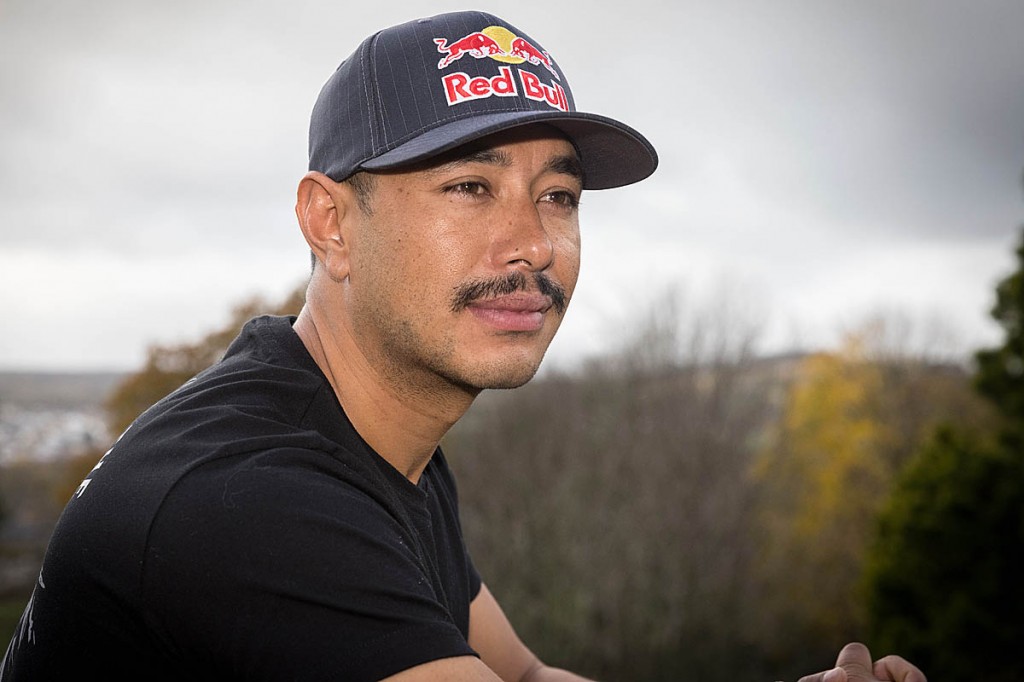
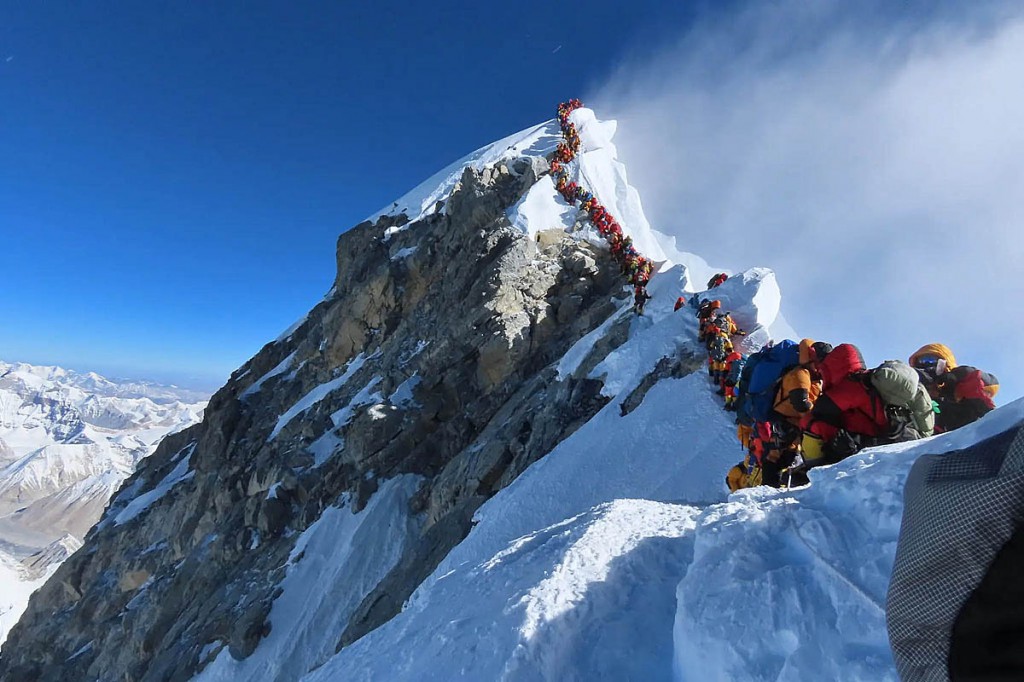
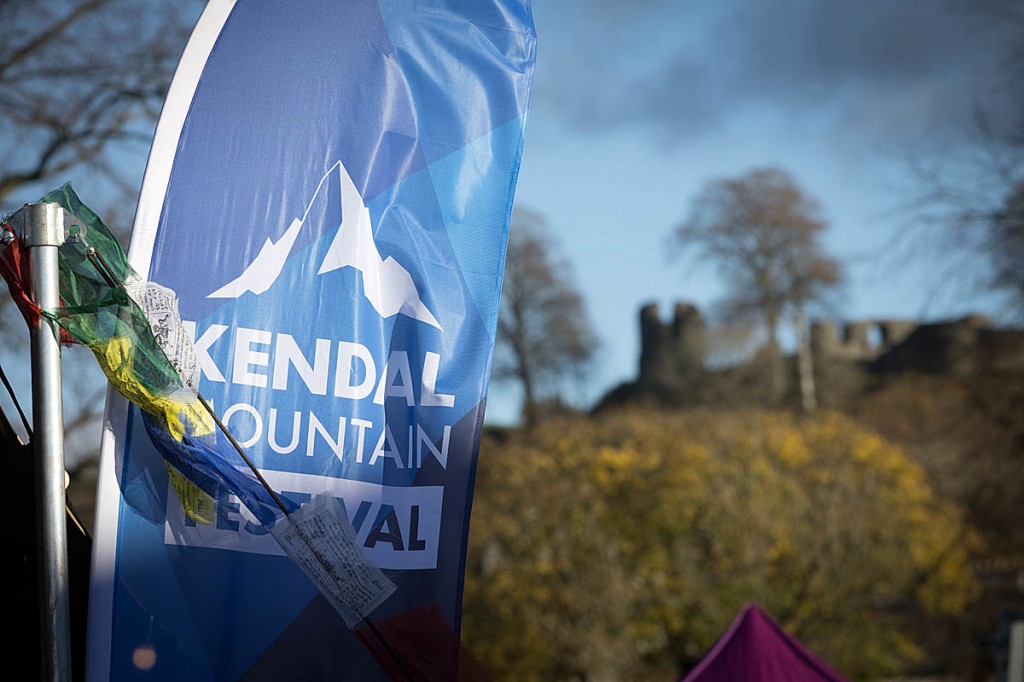
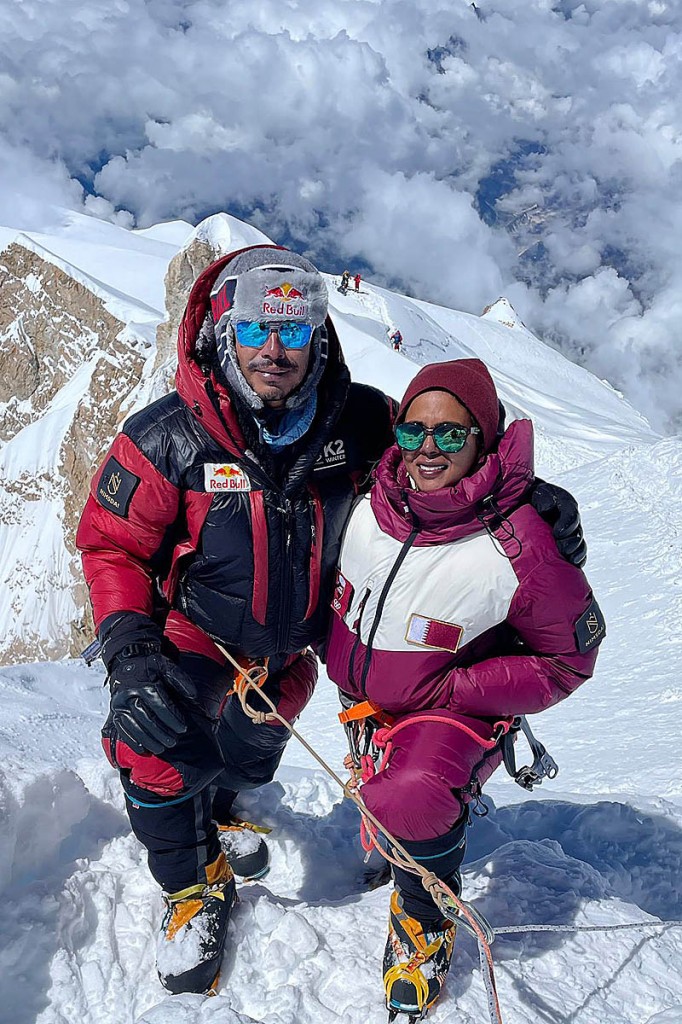
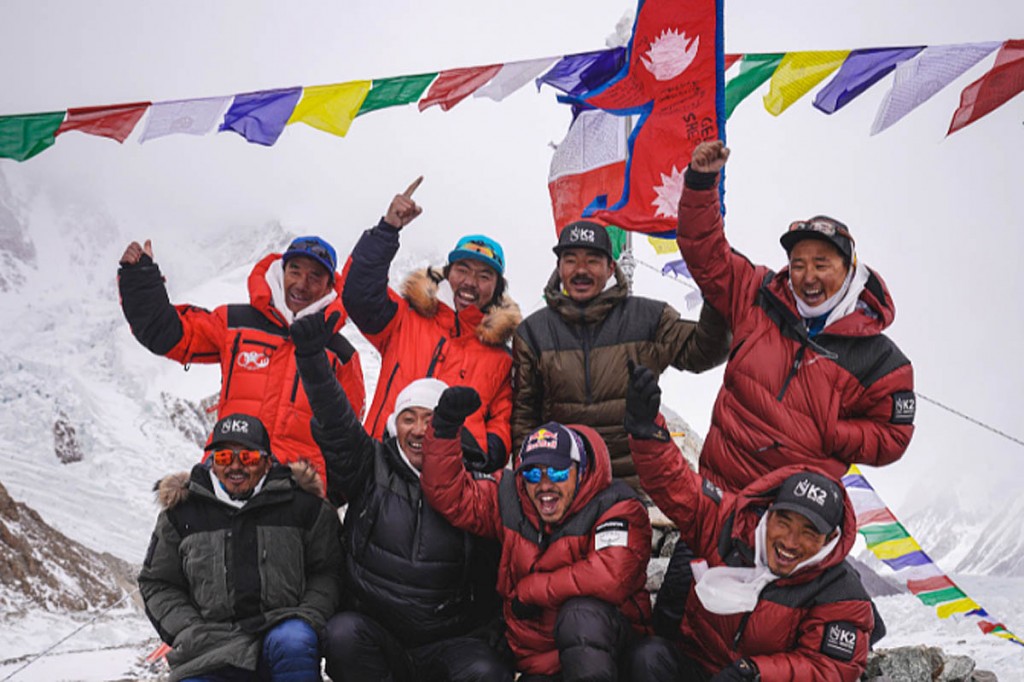
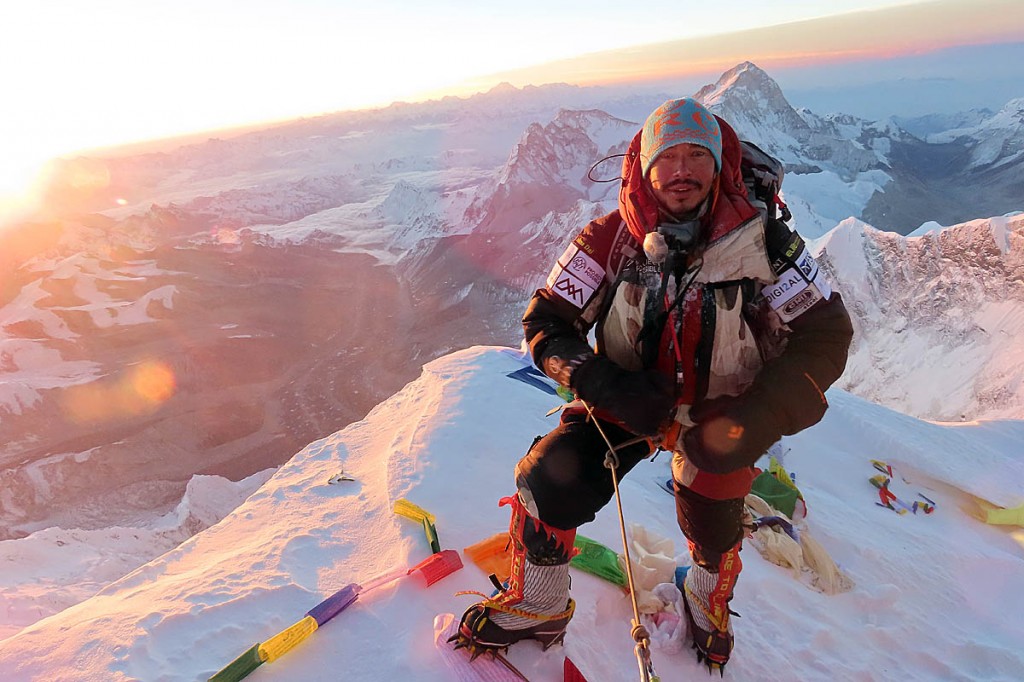
Jonathan Shearman
09 December 2021this guy is truly amazing, astounding. He's beyond normal, super-human really. On the Everest ascent where he took the famous photo, his team simply bypassed the big traffic jam of hundreds of climbers, got to the summit and got back down - and then climbed two more >8000m peaks nearby in the next two days! impossible. Then at K2 he set the fixed ropes for a demoralised group of international climbers after they had already decided to call it quits, after which they were all able to summit. Unbelievable.